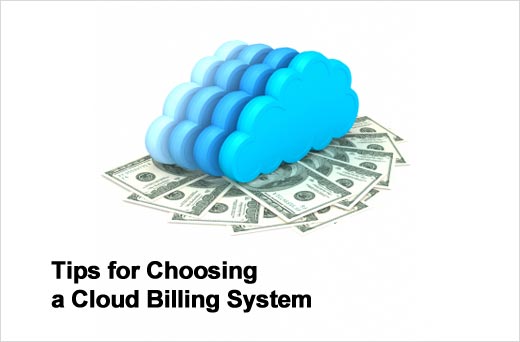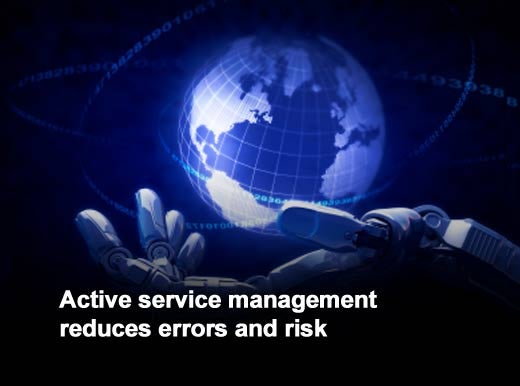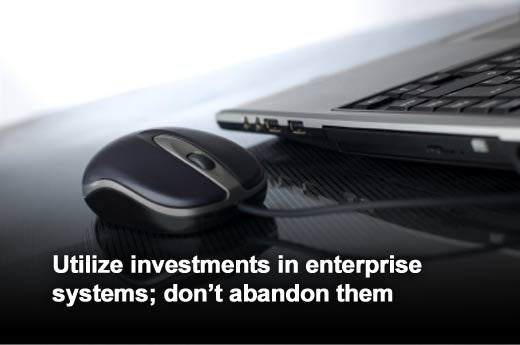According to a recent Incyte Group report, nearly half of all businesses in the United States currently have or are in the process of developing and/or investigating recurring revenue offerings. Unlike traditional business models, which are built around one-time transactions or upfront fees, recurring revenue offerings focus on smaller, ongoing, subscription-based transactions. As more companies develop these types of offerings, they are increasingly shifting from on-premise software to the cloud for a billing platform to monetize and manage their subscription-based products and services. Derek Choy, vice president of engineering for Aria Systems, offers the following tips for choosing a cloud billing system.
Click through for tips on choosing a cloud billing system, as identified by Derek Choy, vice president of engineering for Aria Systems.
In order to have the flexibility your company needs to quickly change its monetization strategy and offer different recurring revenue models, the following functions are essential:
- Support for a range of monetization strategies – including moving with ease from a free trial to a paid subscription to offering bundled products or services
- Support for different pricing plans – from a flat-rate monthly recurring fee to a usage-based quarterly fee, as well as automatic activation processing and cancellation fees
- Channel management – to combine offerings in meaningful ways in different regions or for specific types of users
- Entitlement management – to direct which customer has rights to which products/services, as well as usage tracking to determine what each customer is using and owes
- Reporting insight – to understand how customers are experiencing your product/service, enabling the identification of new marketing opportunities
If you could get your product or service up and running within a few weeks, why wouldn’t you? By implementing a cloud billing platform, you can do exactly that – even if some customization is needed. Lower upfront and licensing costs, little to no capital investment and lower services costs provide big advantages for both startups and established companies looking to introduce new recurring revenue offerings.
In addition to getting your service running quickly, look for a billing solution that can scale with your company as it grows or expands its recurring revenue offerings. Also, anticipate when your business may be the busiest. E-commerce and other companies with recurring revenue models are especially vulnerable during peak times such as Black Friday, when online transaction volumes significantly increase. As a result, the cloud billing infrastructure should be designed to support additional workloads when you need them, without processing delays.
In a billing application, hundreds of activities need to happen at any given time such as creating accounts, updating credit card information, making changes to customer buying plans, processing payments, updating the customer service system and service activation. For these activities to happen seamlessly, the billing system needs to be powerful enough to orchestrate these activities, track their progress and act upon that information by automatically notifying external systems.
While you’re moving to the cloud with your mission-critical billing system, it will likely need to interact with other front- and back-office systems such as customer relationship management, resource planning, analytics and accounting. Utilizing these existing investments will be important for supporting the full customer lifecycle in a timely and effective way, as sharing information in real time and having one, consistent record of customer information is essential to providing a seamless customer experience. To ease integration, it’s important to have a billing platform with a robust set of APIs that can easily connect your existing systems with the billing system.
It’s easy to take “always on” for granted, until your billing system goes down during maintenance updates or when unexpected outages occur, causing significant loss of business. When considering a cloud billing solution, the technical and operational infrastructure supporting it needs to be reliable and support 99.99 percent uptime – no exceptions. To ensure your billing provider can meet the failover and redundancy requirements of the most demanding digital companies, review their service level agreements (SLAs) and check that redundancy at the Web server, app server, network and router levels is in place.
While the adoption of cloud computing has significantly increased over the past few years, companies may still have security concerns. When evaluating cloud billing solutions, there are two key areas that should be protected. First, vendors should be compliant with the Payment Card Industry (PCI) and Statement on Standards for Attestation Engagements (SSAE) 16 SOC I Type II, which are industry-standard classifications for protecting customers’ credit card information, and financial, compliance and operations reporting. Second, check to see how your vendor’s system is designed. For example, if they use a multi-tenant architecture, which is common in cloud computing, be sure you understand how your customer account data will be protected from hackers and other customers through separate data security checks and permissions.










